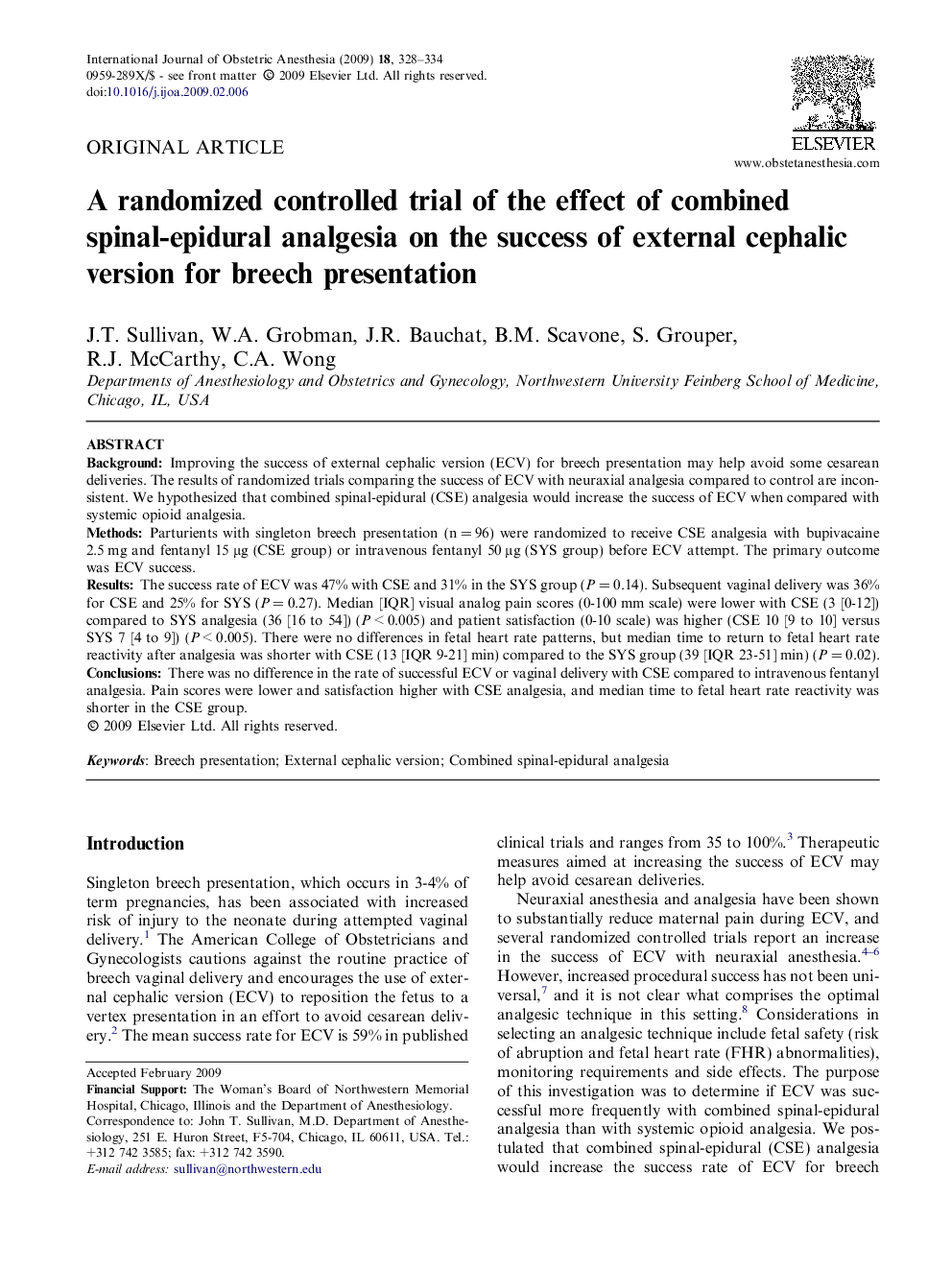| Article ID | Journal | Published Year | Pages | File Type |
|---|---|---|---|---|
| 2757949 | International Journal of Obstetric Anesthesia | 2009 | 7 Pages |
BackgroundImproving the success of external cephalic version (ECV) for breech presentation may help avoid some cesarean deliveries. The results of randomized trials comparing the success of ECV with neuraxial analgesia compared to control are inconsistent. We hypothesized that combined spinal-epidural (CSE) analgesia would increase the success of ECV when compared with systemic opioid analgesia.MethodsParturients with singleton breech presentation (n = 96) were randomized to receive CSE analgesia with bupivacaine 2.5 mg and fentanyl 15 μg (CSE group) or intravenous fentanyl 50 μg (SYS group) before ECV attempt. The primary outcome was ECV success.ResultsThe success rate of ECV was 47% with CSE and 31% in the SYS group (P = 0.14). Subsequent vaginal delivery was 36% for CSE and 25% for SYS (P = 0.27). Median [IQR] visual analog pain scores (0-100 mm scale) were lower with CSE (3 [0-12]) compared to SYS analgesia (36 [16 to 54]) (P < 0.005) and patient satisfaction (0-10 scale) was higher (CSE 10 [9 to 10] versus SYS 7 [4 to 9]) (P < 0.005). There were no differences in fetal heart rate patterns, but median time to return to fetal heart rate reactivity after analgesia was shorter with CSE (13 [IQR 9-21] min) compared to the SYS group (39 [IQR 23-51] min) (P = 0.02).ConclusionsThere was no difference in the rate of successful ECV or vaginal delivery with CSE compared to intravenous fentanyl analgesia. Pain scores were lower and satisfaction higher with CSE analgesia, and median time to fetal heart rate reactivity was shorter in the CSE group.
